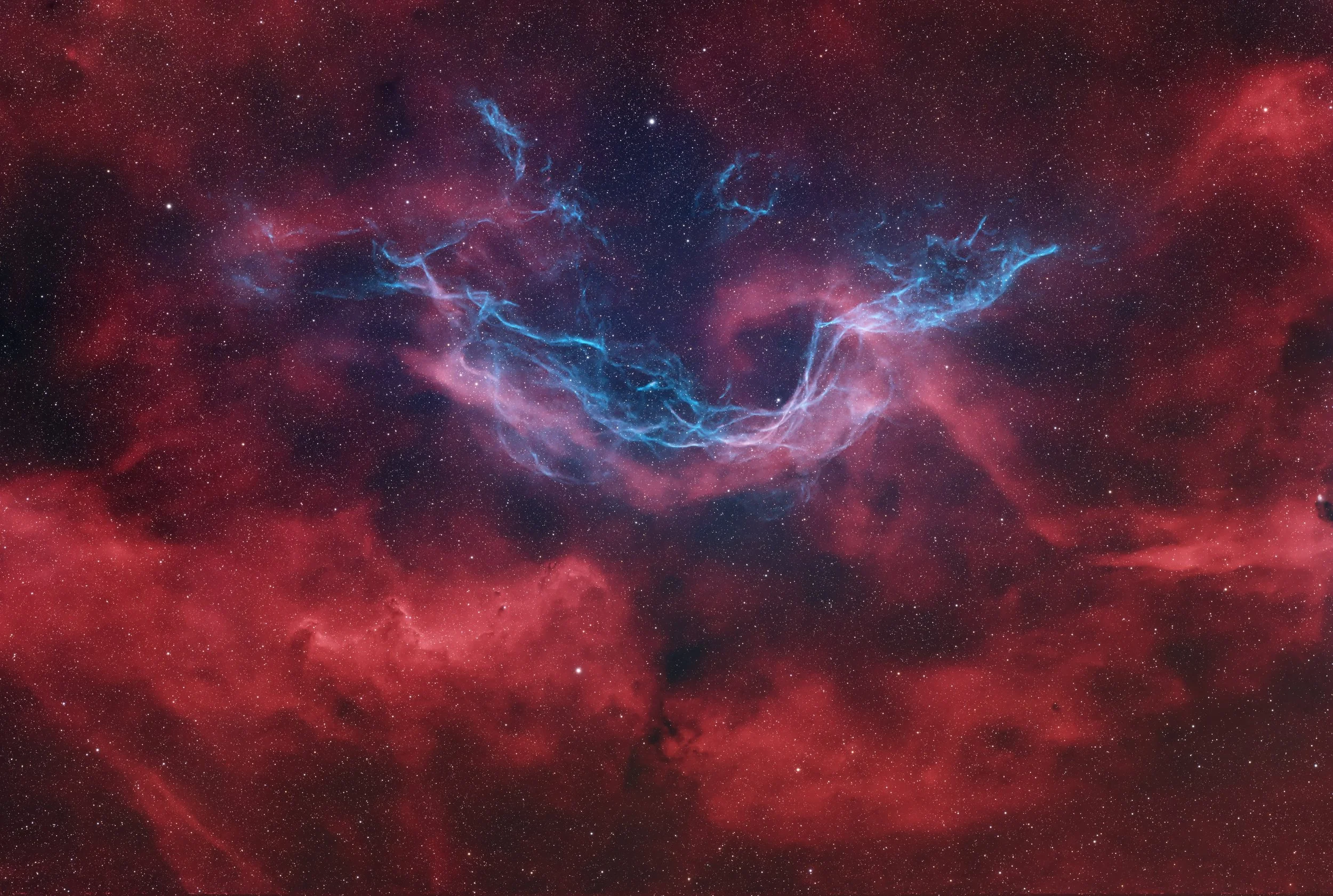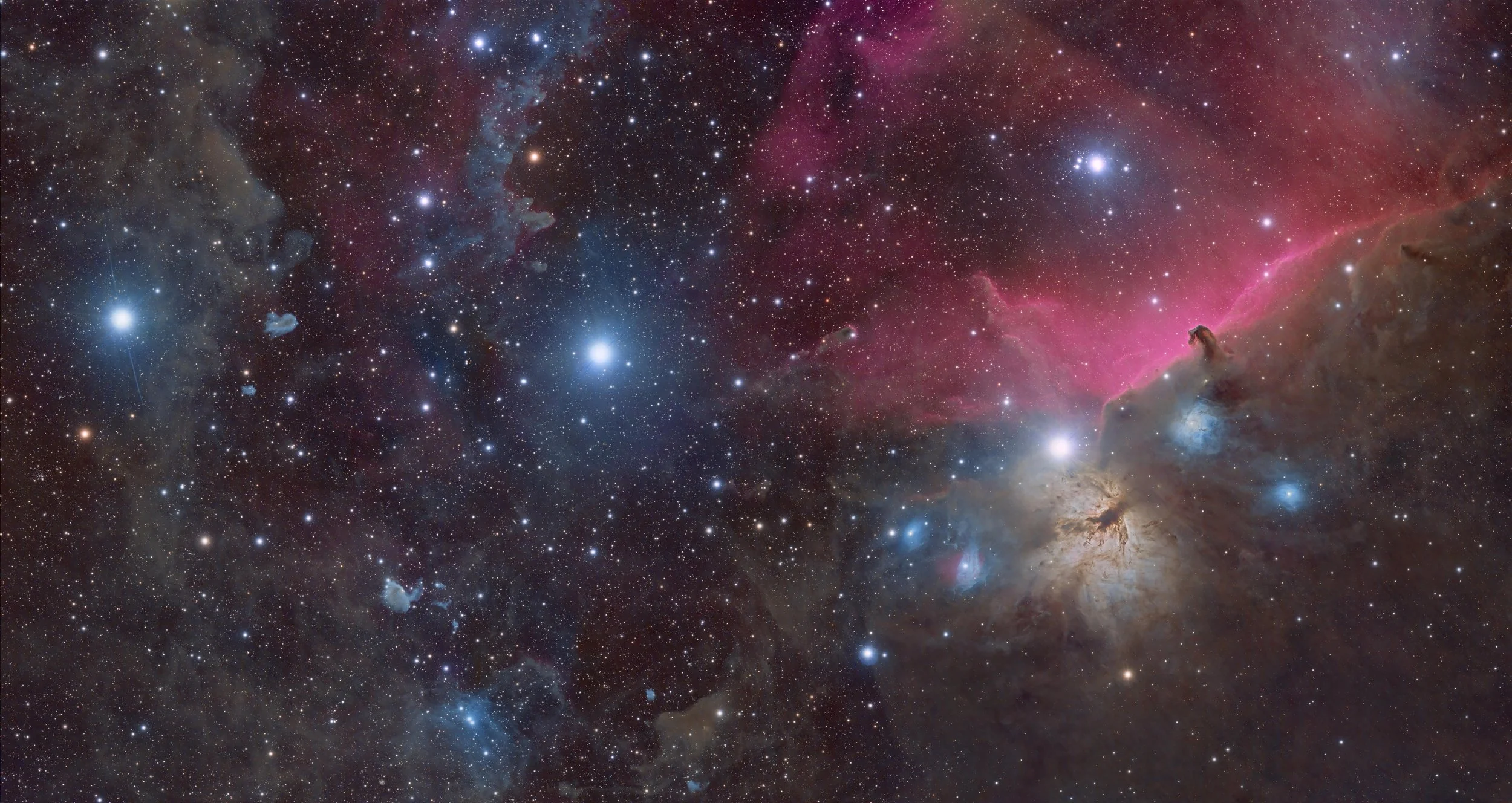
AAPOD2 Image Archives
SNR G206.9+2.3 Supernova Remnant in the constellation Monoceros
SNR G206.9+2.3 is a stunning supernova remnant located in the constellation Monoceros. This image captures the intricate details and vibrant colors of the nebula, revealing the remnants of a massive star that exploded thousands of years ago. The nebula's structure is beautifully highlighted by the Ha and Oiii filters, which emphasize the regions of ionized hydrogen and oxygen, while the RGB filters add a natural color balance to the image.
Photographed at the Observatorio Remoto Desierto Cósmico in Atacama, Chile, this image benefits from the exceptionally dark skies of a Bortle 2.0 location. The total integration time of 24 hours and 15 minutes allowed for the collection of extensive data, bringing out the faintest details and the full grandeur of this celestial object. The resulting image is a testament to the beauty and complexity of supernova remnants, providing a glimpse into the life cycle of stars.
SNR G304.4-3.1 Supernova Remnant in the constellation Musca
SNR G304.4-3.1 is a supernova remnant located in the constellation Musca, within the vicinity of the Theta Muscae multiple star system, approximately 7400 light years from Earth. This fascinating object is the aftermath of a stellar explosion, providing a glimpse into the cataclysmic events that shape the cosmos. The intricate structures within the remnant are a testament to the powerful forces unleashed during the supernova, which continue to interact with the surrounding interstellar medium.
Captured over a total integration time of 36 hours and 37 minutes, this image was taken using Ha, OIII, and RGB filters under the pristine Bortle 2.0 skies of Desierto Cósmico, Atacama, Chile. The resulting composite reveals the delicate interplay of hydrogen and oxygen emissions, with vivid colors highlighting different elements and processes within the remnant. The location's exceptionally dark skies allow for a detailed and deep view of this celestial wonder, emphasizing the ethereal beauty and scientific significance of supernova remnants in our galaxy.
IC 417, IC 410 & IC 405. Three-panel mosaic in HaLRGB
This three-panel mosaic showcases the intriguing nebulae IC 417, IC 410, and IC 405, captured in HaLRGB. These emission nebulae are located in the constellation Auriga and present a stunning array of colors and structures.
IC 417, often referred to as the Spider Nebula, lies approximately 10,000 light-years from Earth. It features a cluster of young stars known as Stock 8, whose intense radiation ionizes the surrounding gas, creating the nebula's characteristic glow.
IC 410, also known as the Tadpoles Nebula, is located about 12,000 light-years away. It contains the open star cluster NGC 1893, which energizes the nebula. Notably, IC 410 includes two striking "tadpole" structures, which are dense regions of gas and dust being sculpted by stellar winds and radiation.
IC 405, the Flaming Star Nebula, is roughly 1,500 light-years from Earth. It is illuminated by the variable star AE Aurigae, which is believed to have been ejected from the Orion Nebula region millions of years ago. The interaction of AE Aurigae's intense light with the surrounding hydrogen gas creates a spectacular emission and reflection nebula, exhibiting striking red and blue hues.
Together, these nebulae form a vibrant tapestry of star formation and cosmic activity, offering a vivid glimpse into the dynamic processes shaping our galaxy.
The Three Kings or The Three Sisters - Orion's Belt Mosaic - HaLRGB
he Three Kings, also known as The Three Sisters, refer to the three bright stars that form Orion's Belt, an iconic asterism in the constellation Orion. This celestial trio, comprised of the stars Alnitak, Alnilam, and Mintaka, has captivated stargazers for centuries with its prominent position in the winter sky.
In this stunning mosaic, The Three Kings are immortalized in a breathtaking HaLRGB composition, showcasing the intricate beauty of Orion's Belt against a backdrop of cosmic wonders. The mosaic captures the ethereal glow of hydrogen alpha emissions, revealing the intricate structure of the surrounding nebulae and star-forming regions.
As the centerpiece of the Orion constellation, The Three Kings hold a prominent place in ancient mythology and cultural lore, symbolizing power, courage, and guidance. Their enduring presence in the night sky serves as a reminder of the timeless beauty and majesty of the cosmos, inspiring awe and wonder in all who gaze upon them.
Through the lens of scientific inquiry and artistic expression, The Three Kings mosaic invites observers to embark on a celestial journey, exploring the depths of space and uncovering the mysteries of the universe. Whether observed from Earth's surface or captured in stunning astrophotography, The Three Kings continue to illuminate the night sky, guiding humanity's quest for knowledge and understanding of the cosmos.
Cederblad 111
Image Description and Details :
I share this capture made in March Cederblad 111 (Ced 111) is a blue reflection region in the southern constellation of Chamaeleon and is part of one of the closest (550 light years) dark cloud complexes to the Sun. Taken from Huinganes / Machalí / ChileTelescope: Askar FRA400 F3.9 Mount: iOptron CEM70-GCamera: QHY163CFocuser: Primalucelab SestoSenso 2 RGB: 78 x 600” 13hrsSoftware: SGP PHD2 PixInsight
Copyright: Claudio Ulloa





